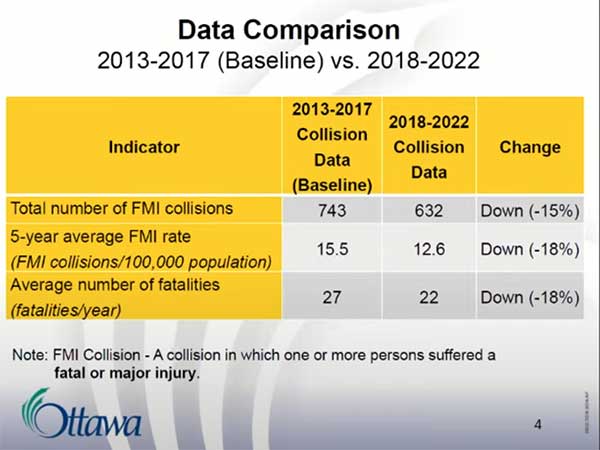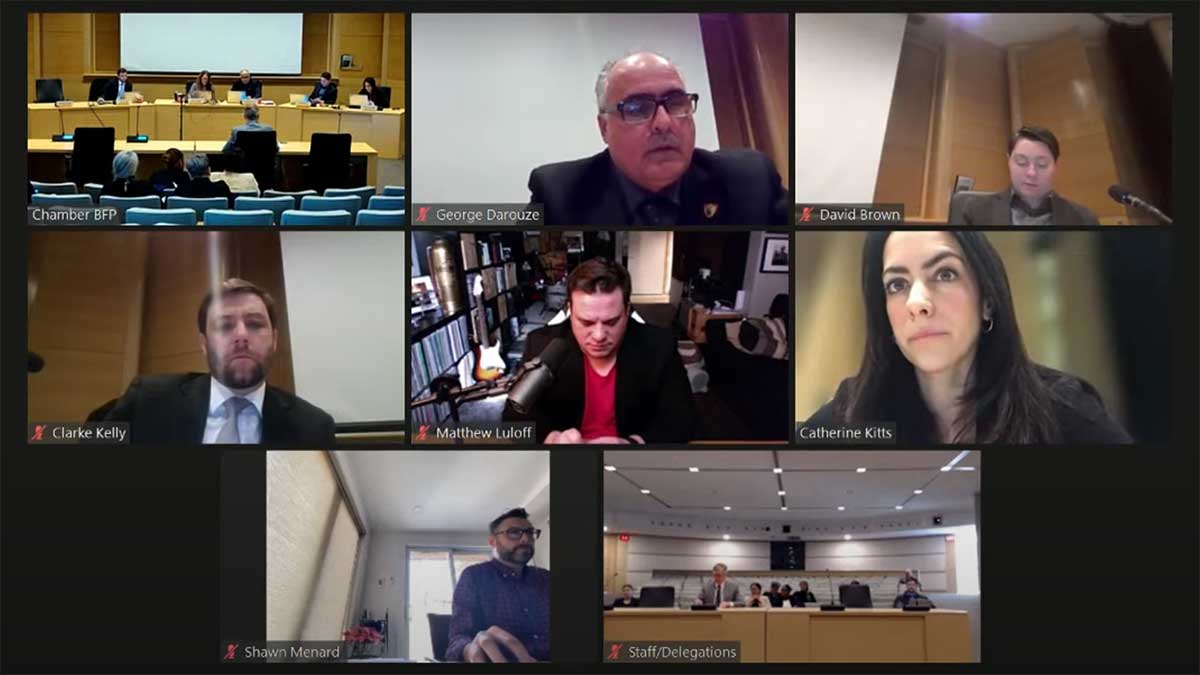Ottawa city staff are working on measures to reduce the disproportionately high number serious traffic collisions that happen in rural areas.
Despite lower traffic volumes, 38 per cent of all fatal and major injury collisions happened on these roads between 2018 and 2022, a staff report presented to a recent meeting of the Agricultural and Rural affairs Committee meeting shows. In all, there have been 632 fatal and major injury collisions between 2018 and 2022 with 84 per cent of those involving high-risk driving such as aggressive, distracted or impaired driving behaviours.
It’s not all bad news.
Comparing collisions between the 2013-2017 and 2018-2022, the total number of FMIs [fatal or major injury collisions] was actually down by 15 per cent, and the five-year average FMI rate was down 18 per cent.
The city has a goal of reducing major injury collisions across the community by 20 per cent this year, and an accompanying long-term goal of zero fatalities by 2035.

But the number of rural crashes is concerning prompting West Carleton-March Coun. Clarke Kelly to ask staff whether the city is on track to achieve the 20 per cent reduction target this year. Road safety program manager Cathy Kourouma said that they won’t know for certain until the items in the 2024 action plan are implemented and observed in subsequent years.
“Throughout the life of the plan we will continue to closely monitor these trends,” said Kourouma.
The 2024 Road Safety Action Plan’s (RSAP) budget is $20.5 million with 25 per cent allocated towards rural areas.
The plan includes funding for engineering measures, such as addressing skewed intersections (intersections where the roads don’t intersect at 90 degrees), implementing safety edges, upgrading gravel shoulders, improving safety on horizontal curves and identifying up to 10 rural stops for enhanced signage and pavement marking.
Staff are also undertaking a study of Automated Speed Enforcement (ASE). Of the 60 ASE locations in place, pending or currently proposed, eight are in the city’s rural areas.
This city will also be proceeding with other projects such as fully protecting left turn phasing at two locations, installing an all-way stop at two locations, installing overhead flashing beacons at two-way-stop controlled intersections and in-service Road Safety Reviews along two rural corridors.
But available funding is always a challenge, said Rideau-Jock Coun. David Brown.
“It seems like we always have more projects than dollars,” he said.
Committee chair and Osgoode Coun. George Darouze said there seems to be an ever expanding need for improvements.
“Every time in rural areas we fix one intersection, another two pop up that need modification,” said Darouze. “From the traffic, and it’s of course the increase of people wanting to live in rural areas. So it’s becoming often more dangerous.”




